By Jessica WhitelawLast week I was able to visit the long-awaited Faith Ringgold exhibit, American People, at the New Museum in New York. Many know Ringgold from her book Tar Beach, but this retrospective - her first - features Ringgold as artist/organizer/educator and showcases paintings, murals, political posters, sculptures, and story quilts that span the Harlem Renaissance, the Black Arts Movement, critical feminism, and reach into the landscape of contemporary Black artists working today. After years of a relationship with the book version of Tar Beach, it was moving to stand in front of the original story quilt that the book is based on, this intimate everyday object upon which she wrote, painted, and stitched, to push the boundaries of white western art traditions and explore themes of gender, race, class, history, and social transformation.
Below is a protocol adapted from the steps of art criticism that can be used to support students in developing picturebook practices that engage critical literacy and inquiry. It can be used with Tar Beach, whose content is both accessible and complex enough to use with both younger and older readers. But it offers a flexible participation structure that teachers can use with any picturebook that has rich visual/verbal content. Like most protocols, it works best as a flexible tool not a prescriptive device. Picturebook Read Aloud Protocol Adapted from the steps of art criticism, this protocol provides a framework for sharing picturebooks that aims to cultivate a critical practice. It guides the reader through a process of looking closely to notice what they might otherwise overlook and to use what they know about words and pictures to analyze and make sense of what they see. The stages offer a helpful way to support students of any age through a process and unfolding of critical engagement that relies upon attention to specific details in the work to guide thoughtful engagement and response. The protocol is intended as a facilitation guide for teachers. Wording should be adjusted for the audience/age of the reader. LOOK CLOSELY Take inventory. Examine the cover of the book, the dust jacket and the endpapers. Look closely at the typography, the pictures, the words. Describe what you see and notice in detailed, descriptive language. ANALYZE Use what you know about picturebooks and design to analyze the words and the pictures. Look at the colors, the lines, shapes, textures. Try to determine the media the artist used to make the pictures. Examine the style of the language the writer used. Look for patterns, repetition, rhyme. Draw attention to the picturebook as a unique form of the book that relies on the synergy of the words and the pictures by asking how the words and pictures work together: What do the words tell you that the pictures do not? What do the pictures tell you that the words do not? What happens in between the openings? QUESTION Use questions together to probe and deepen. Stop and ask questions about pages that are visually and/or verbally rich or complex. What sense do you make of this page? How do you know that? Why do you think the author or illustrator chose to do it the way they did? What questions does the page raise for you, make you wonder about? CRITIQUE What do you think the author/illustrator is trying to do or say or show in this book? Who do we see in this book? Who is the audience for this book? Who do you think should read it? Whose voice/voices do we hear? Who do we not hear from? What ideas do you have about the topic/topics in the book? What do you think the storyteller in this book believes or thinks or wants us to know? What questions do you have about what the storyteller is saying and showing? What genre/category does the book belong to? What other work has this author and/or illustrator created and how is it similar to or different from this book? RESPOND After having looked closely at the book, what does this text mean to you? What does the story make you wonder about? How could this story mean different things? To you? To different readers? Additional Teaching Resources for Tar Beach Watch Faith Ringgold read Tar Beach Create a paper story quilt Listen to Faith Ringgold’s favorite songs Explore a Faith Ringgold Text Set:
For Older Readers: Watch the Ted Talk by Kimberlé Crenshaw on intersectionality Examine how Tar Beach explores identity and power at several intersections. Examine other artworks of Faith Ringgold such as her For the Women’s House mural at the Brooklyn Museum or her America series of paintings on the artist’s website Read Ringgold’s feminist artist’s statement from her memoir, We Flew Over the Bridge. Look for themes that connect across and examine how the different art forms allow the themes to be explored differently. Read other excerpts from We Flew Over the Bridge: The Memoirs of Faith Ringgold, and examine how ideas from her life take shape in Tar Beach. Consider the different forms of visual and verbal storytelling that she employs in her work and how ideas are conveyed through different modalities in each. Jessica Whitelaw is faculty member at the University of Pennsylvania in the Graduate School of Education and a member of CLA. BY MEGHAN VALERIO & WILLIAM BINTZRecently, I (William) introduced crossover picturebooks in a graduate literacy course to students pursuing a reading specialization Master’s degree. All students were practicing teachers ranging from elementary through high school. Each week, I read aloud a crossover picturebook to introduce the class session. Selected picturebooks dealt with themes including death and dying, divorce, suicide, mental illness, physical disability, parent-child separation, and other life-changing and impactful events. One example is Dragon by Gro Dahle (2018). It tells the story of Lilli, a young girl who is a child abuse victim by her mother. Lilli regards her mother as a dragon because she is explosive, hot-tempered, and abusive. After reading, I invited students to share their questions and reactions to crossover picturebooks. Three questions and one reaction were particularly illustrative:
These responses inspired this blog post. They revealed teachers may not know much about crossover literature but are curious to know more about it. What are Crossover Picturebooks?Crossover literature, or texts written for dual-aged audiences, is not a new genre, as many books could be considered crossover already. While picturebooks specifically might be enjoyed by both children and adults, crossover picturebooks, a subset of crossover literature, are written and illustrated intentionally for both children and adults, breaking conventional assumptions that books are intended for one age group (Falconer, 2008; Harju, 2009, Rosen, 1997). Crossover authors communicate purposeful messages to both audiences equally (Harju, 2009). Narratives then are considered ageless and timeless, often portraying issues that might be deemed controversial including death, verbal and physical abuse, and divorce. In a world where in-person and online book shopping and borrowing is organized by genre and age, this makes these “ageless” books complex. Consider first an adult purchasing a picturebook for themselves, and on the flip side, encouraging a child to purchase a book about abuse. Both instances could be questionable, even alarming to some. While there are truly designated texts for children, like aesthetic and sensory appealing babybooks (Kümmerling-Meibauer, 2015), crossover picturebooks defy traditional book categorizing norms, causing anyone interested to rethink what counts as children’s literature vs. adult. Children’s literature though is written and published by adults for children (Rosen, 1997). So really, is there such a thing as a true children’s book if the text isn’t written by children at all? What Concerns Does This Raise?Currently, we are conducting research on crossover picturebooks. Specifically, we are exploring teacher concerns on using this literature in the classroom. Based on this research, two major findings indicate that many K-12 teachers worry about the following issues:
These concerns, and many others like them, are real for teachers. Traditionally, children’s literature is to be enjoyable not uncomfortable, entertaining not controversial. Crossover literature invites a different perspective and pushes the envelope on censorship and what constitutes taboo topics in classrooms. To help explore this further, we recommend the following resources. These resources include picturebooks and professional literature that have pushed our thinking about crossover literature. We hope they will push yours.
ReferencesBishop, R.S. (1990). Mirrors, windows, and sliding glass doors. Perspectives: Choosing and Using Books for the Classroom, 6 (3). Falconer, R. (2008). The Crossover Novel: Contemporary Children’s Fiction and Its Adult Readership. London, UK: Routledge. Harju, M.L. (2009). Tove Jansson and the crossover continuum. The Lion and the Unicorn, 33(3), 362-375. Kümmerling-Meibauer, B. (2015). From baby books to picturebooks for adults: European picturebooks to the new millennium. Word & Image, 31 (3), 249-264. Rosen, J. (1997). Breaking the age barrier. Publishers Weekly. 243 (6). Meghan Valerio is a doctoral student in Curriculum and Instruction with a Literacy emphasis at Kent State University. Meghan’s research interests include investigating literacy and cognitive development from a critical literacy perspective, centering curricula to understand reading as a transactional process, and exploring pre- and in-service teacher perspectives in order to enhance literacy instructional practices and experiences. William Bintz is Professor of Literacy Education in the School of Teaching, Learning, and Curriculum Studies at Kent State University. His professional interests include the picturebook as object of study, literature across the curriculum K-12, and collaborative qualitative literacy research. BY JENNIFER SUMMERLIN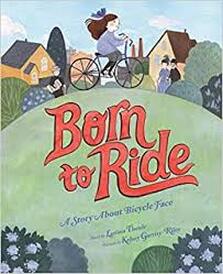 The Notable Children’s Books in the Language Arts Committee (NCBLA) read and reflected on over 400 of the newest books (published in 2019) for readers in grades K-8. Committee members considered the following qualities for choosing the final 30 titles to make the NCBLA Notables 2020 list:
I will start by providing a brief summary, followed by corresponding primary source images and instructional strategies for maximizing text and supporting visual literacy. Coupling quality historical fiction texts with visual primary sources like infographics, charts, graphs, photographs, illustrations, or political cartoons affords opportunities to critically explore and unpack images, while building background knowledge and making connections to the text (Lent, 2016; Harris, 2010). Summary This beautiful picture book features one strong-willed young girl, Louisa Belinda Bellflower, determined to learn to ride a bicycle. This story, set in Rochester, New York in 1896, tells of a brother and sister (Louisa and Joe) who, like other siblings, play and disagree. Although typical siblings, the difference is the topics of their disagreements, which tend to focus on the things boys can do that girls cannot. Louisa is discouraged from wearing anything other than a dress, limiting her ability to do cartwheels or learning to ride a bicycle (also off limits for girls). Louisa is determined to ride a bike, even if it means contracting “bicycle face,” a permanent result of scrunching your face and bulging your eyes while trying to balance the bike. Louisa Belinda Bellflower will not be stopped as she works to prove to her brother and boys everywhere that girls can and should ride a bicycle. Primary Visual Source The Library of Congress website features a variety of visual primary sources depicting women as a collective part of the late 19th century bicycle frenzy. The bicycle, commonly referred to as the wheel, was an instrumental vehicle of progress for the women’s movement and their fight for voting rights. Globally, women began riding bicycles, finding new freedom in their mobility. With this increased transportation came a greater public presence of women, allowing increased likelihood of their voices to be heard. Two primary visual sources are: The “new” woman and her bicycle by Frederick Burr Opper and Woman in a room with a bicycle saying to a man and child, “Sew on your own buttons, I’m going for a ride” photographer unknown. Primary Visual Source: The “new” woman and her bicycle
Primary Visual Source: Woman in a room with a bicycle saying to a man and child, “Sew on your own buttons, I’m going for a ride”Website: https://www.loc.gov/pictures/resource/cph.3a50886/ Title: Woman in a room with a bicycle saying to a man and child, “Sew on your own buttons, I’m going for a ride.” By: Unknown Date Created/Published: 1899, Stereo Copyrighted B. L. Singley Summary: This printed photograph was doubled and placed on cardboard to create a stereo card for a stereograph machine. A stereograph machine was used to make pictures look three dimensional, similar to an old-fashioned view-master. To learn more about the stereograph, view the video at the What is a Stereograph? webpage of Middlebury College's Museum of Art. The image on the photograph is of a woman standing in her home with her bicycle beside her. Looking closely, you see she is gesturing for a little boy to take a piece of fabric or clothing from her. Art critics suggest the picture seems staged because the bicycle being held by the woman is very large and does not have the lower crossbar that is typical of a woman’s bicycle. Notice that the woman’s attire in the picture does not support riding a bicycle. However, as more women began using bicycles for transportation, changes in clothing, such as bloomers, allowed them to ride comfortably. Prior to these changes in clothing styles, women were pictured seated sideways to accommodate their long dresses. Questions for Analysis:
Text Connection: Revisit Born to Ride: A Story About Bicycle Face with students. Before rereading, ask the students to pay close attention to what the women are doing throughout the book. After reading, discuss all of the things the women are doing from the beginning to the end of the text. Begin a conversation about why there might be concern and discouragement from others (men and women) when it comes to women riding bicycles. Ask the students what connections they can make between the photograph and the text. To wrap up the conversation, ask students about potential origins of the “Bicycle Face” affliction. Share the author’s note, “About Bicycle Face” and “From Bicycles to Votes.” To conclude the session, have students work in pairs to complete T-Charts, transcribing their learnings with specific, supporting evidences. References(ca. 1899) Woman in a room with a bicycle saying to a man and child, "Sew on your own buttons, I'm going for a ride"., ca. 1899. [Photograph] Retrieved from the Library of Congress, https://www.loc.gov/item/2006683468/. Harris, B.R. (2010). Blurring borders, visualizing connections: Aligning information and visual literacy learning outcomes. Reference Services Review, 38(4), 523-535. doi: 10.1108/00907321011090700 Lent, R. C. (2016). This is disciplinary literacy: Reading, writing, thinking and doing…Content Area by Content Area. Thousand Oaks, CA: Corwin SAGE Publications. Opper, F. B. (1895) The "new woman" and her bicycle - there will be several varieties of her / F. Opper. , 1895. N.Y.: Published by Keppler & Schwarzmann. [Photograph] Retrieved from the Library of Congress, https://www.loc.gov/item/2012648801/. Theule, L. (2019). Born to ride: A story about bicycle face. New York, NY: Abrams Books for Young Readers. Jennifer Summerlin is an Assistant Professor of Reading at the University of Alabama at Birmingham. Her research examines construction of knowledge among preservice teacher candidates, supporting literacy best practices within the P-12 classroom, and reading intervention. Jennifer is a member of the 2019 Notables Committee. She can be reached at [email protected]. |
Authors:
|
CLA
About CLA
|
Journal of Children's Literature
Write for JCL
|
ResourcesCLA-sponsored NCTE Position Statements
|
Members-Only Content
CLA Video Library
|
© COPYRIGHT 2018.
ALL RIGHTS RESERVED |


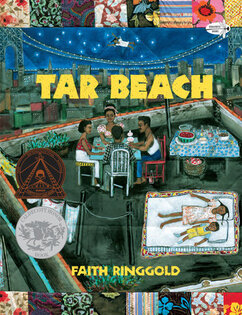
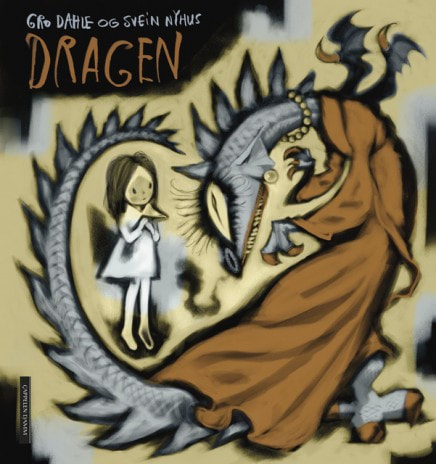
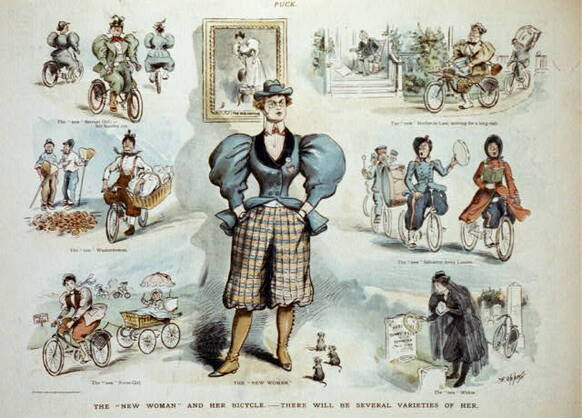
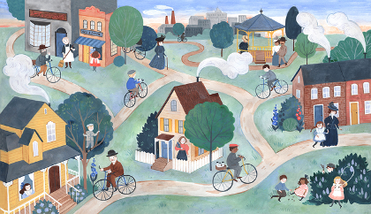
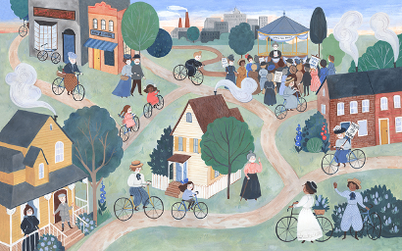
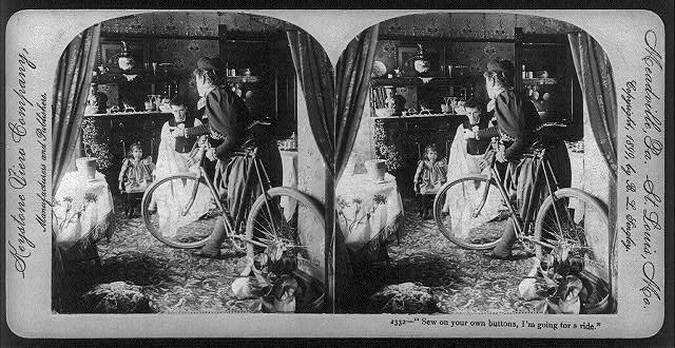
 RSS Feed
RSS Feed